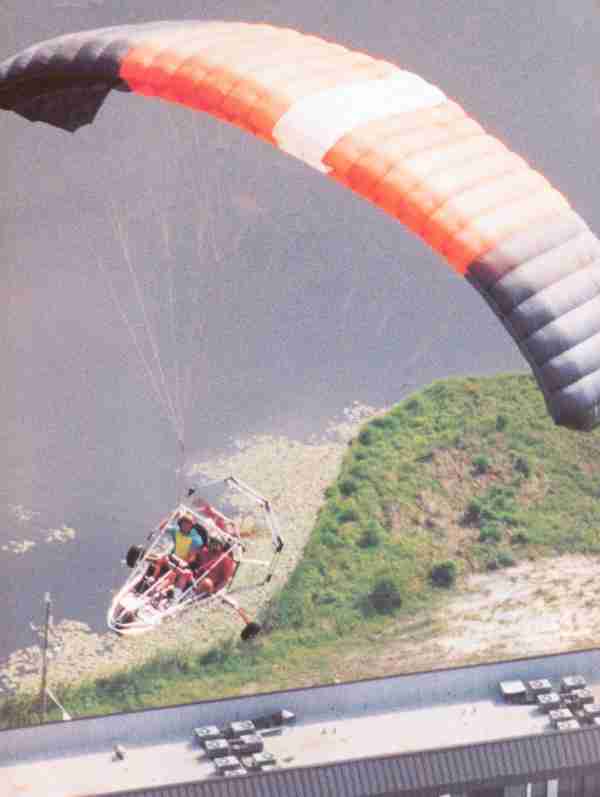
St. Andrews Aviation boss Charles Dozier calls his new Viking II a “parachute plane” rather than simply a powered parachute. In one particular way it certainly isn’t like those which preceded the new aircraft: Viking II employs side-by-side seating in the first such example with which I’m aware among powered parachute aircraft. For those doing training in these machines, such side seating is usually considered optimal so the instructor can better interact with his student.
Ground steering is also made intuitive by employing a steering bar that works the way a bicycle does (whereas many powered parachutes use a joystick-type control for ground handling). Because the seats are alongside one another, Dozier was also able to centralize the throttle and nosewheel brake. Another benefit, says the designer, is a lowered center of gravity because the student or other occupant is not raised above and behind as in most powered parachutes.
For in-air steering – which requires the use of your feet on powered parachutes – the Viking II has a dual set of foot pedals such that either occupant can fly the machine while the other observes.
Viking II is made of aluminum tubing octagonally-arranged around the prop guard area, spring steel main landing gear and a steel nosewheel construction. Power is provided by the Rotax 503, arguably the most popular engine ever offered to the ultralight community. With a surprisingly low empty weight of just 270 pounds, the 503 can easily carry the rig and pilots. Dozier says the Viking II has been in development for over ten years.


Hi Dan, It’s been a while. I m the argentinian guy that repaired your sail I wander what ever happened to it, to all of you guys.!!!! About me I am here in Valle de Bravo. Its the paragliding meca of the Américas. I am doing my stuff here. http://Www.glideair.mysite.com. http://Www.glideair.wixsite.com